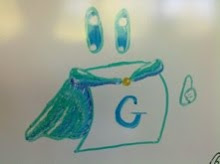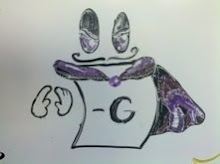Svenja Huntemann, Keynote: "Bounding the Boiling Point"
Svenja gave our keynote on Saturday (the first Sprouts keynote ever!) that included an overview of temperature and cooling. She included hot, tepid and cold games, using switches as a reference. She then got into thermographs, explaining them from the basics. She talked about thermic options and confusion intervals, using these to show temperature bounds.
Svenja explained that the boiling point is the supremum of temperatures for a ruleset, then presented Berlekamp's conjecture that the boiling point of Domineering is only 2. Svenja's team found evidence in this direction, showing that the boiling point of snake-like boards is bounded above by 3. She explained the difficulties with generalizing this to all boards.
From Session 2:
Vikram Kher, "NP-hardness of a 2D, a 2.5D, and a 3D Puzzle Game"
Vikram talked about the computational complexity of two puzzle-based video games (of the three from his paper). For both he showed reductions from 3-SAT. First he showed how to create a Baba Is You board from a 3-SAT formula by using two tokens for each variable. Next he described the reduction for Fez, which uses rotating rings with the literals implemented as vines for the main character to cling to.
Emma Jones, "Petals"
Emma talked about Petals, a partisan game she created. A position consists of a ring of petals: Red or Blue. A turn consists of removing three petals: two of your own color and one of the opponent's right between them. She found patterns that have value zero as well as some strands that have a variety of other values, including stars, fractions, and Up.
Ian Grenville, "Loopy Game Values"
Ian gave the only talk about Loopy Games. (This might be the first ever Sprouts talk about loopy games!) He explained how they work, including the difference between winning and surviving. He showed some examples of game graphs and the Draw outcome class. Then he explained the values On, Off, Dud, Over, and Under. Finally, he talked about how stoppers can be used to simplify analysis, as well as how to deal with some cases where the position isn't a stopper.
This was another great group of talks!
I'll post one more time about other things that came out of Sprouts this year.


